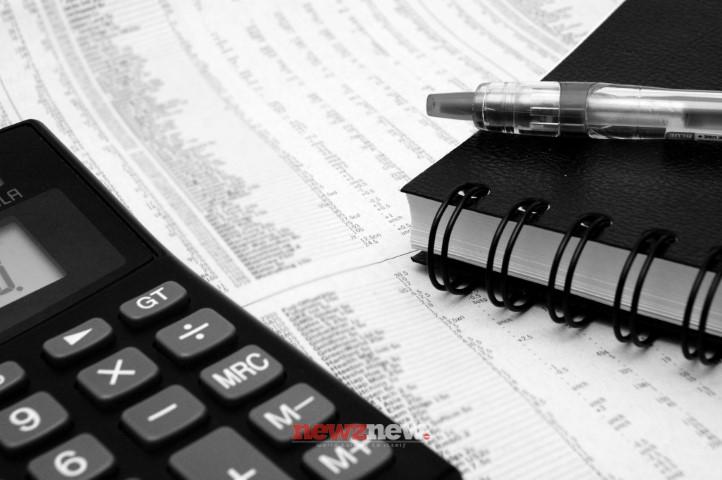Contents
- 1 Understanding a brokerage calculator
- 2 Why use a brokerage calculator for options and futures trading?
- 3 How to use a brokerage calculator for options and futures trading?
- 4 View cost breakdown
- 5 Adjust and optimise trades
- 6 Tips for effective use of a brokerage calculator
- 7 Optimise your trades with a brokerage calculator
How to use a brokerage calculator for options and futures trading?: Options and futures trading have gained significant traction among traders who are looking to capitalise on market movements.

However, with potential profits come various costs, including brokerage fees, exchange charges, and taxes. Accurately estimating these costs is crucial for making informed trading decisions. This is where a brokerage calculator becomes an essential tool for traders.
In this guide, we will explore how to use a brokerage calculator effectively for options and futures trading, ensuring better cost management and smarter trading strategies.
Understanding a brokerage calculator
A brokerage calculator is an online tool that helps traders determine the exact costs associated with buying or selling financial instruments such as futures and options. It provides a breakdown of charges, including:
- Brokerage fees: The commission charged by the brokerage firm.
- Exchange transaction charges: Fees imposed by stock exchanges.
- Securities Transaction Tax (STT): A tax levied on securities transactions.
- Stamp duty: State-imposed charges on trade transactions.
- Goods and Services Tax (GST): Tax applicable on brokerage and other charges.
- SEBI turnover fees: A small charge levied by the Securities and Exchange Board of India (SEBI).
Using a brokerage calculator before placing trades helps in evaluating the net profit or loss after all deductions, ensuring a more transparent trading experience.
Why use a brokerage calculator for options and futures trading?
A brokerage calculator helps traders manage costs effectively and make informed decisions. Here’s why it plays a crucial role in options and futures trading:
- Accurate cost estimation
Options and futures trades involve multiple cost components that can impact overall profitability. A brokerage calculator provides a breakdown of all applicable charges, preventing unexpected expenses.
- Comparison of trading costs
Traders often switch between brokerage firms to find the most cost-effective solution. A brokerage calculator allows for easy comparison between different brokers, helping traders choose the one with the lowest fees.
- Risk management
Understanding total trading costs is crucial for effective risk management. By using a brokerage calculator, traders can assess whether a trade is financially viable based on their risk-reward strategy.
- Improved online trading experience
In online trading, speed and efficiency matter. A brokerage calculator helps traders make quick decisions without manually calculating complex fee structures, allowing them to focus on market movements.
How to use a brokerage calculator for options and futures trading?
Using a brokerage calculator is a straightforward process that helps traders estimate costs and optimise their trades. Follow these steps to make the most of this tool:
- Select the trading segment
Most brokerage calculators provide options to choose between equity, futures, and options. Ensure you select the correct trading segment before proceeding.
- Choose the exchange
Different stock exchanges may have varied fee structures. Select the relevant exchange, such as NSE or BSE, to get precise calculations.
- Enter trade details
Fill in the required details such as:
- Buy price: The intended purchase price of the contract.
- Sell price: The expected or actual selling price.
- Quantity/lot size: The number of contracts or lot size traded.
- Select Brokerage Plan
Some brokerage firms offer different pricing plans (fixed or percentage-based). Choose the applicable plan to get an accurate cost estimate.
-
View cost breakdown
Once all details are entered, the brokerage calculator generates a detailed report showing:
- Total brokerage fees
- Exchange transaction charges
- Applicable taxes (GST, STT, Stamp Duty, SEBI Fees)
- Net Profit or Loss after all deductions
Adjust and optimise trades
If the costs appear too high, traders can adjust parameters such as trade size, buy/sell price, or brokerage plan to find a more profitable trading strategy.
Tips for effective use of a brokerage calculator
To maximise the benefits of a brokerage calculator, traders should use it strategically. Here are some key tips to enhance accuracy and optimise trading costs:
- Compare different brokerage plans
Many brokers offer varying brokerage structures. Before finalising a trade, compare different plans using a brokerage calculator to minimise trading costs.
- Use it for pre-trade analysis
Before placing a trade-in online trading, enter expected prices to estimate potential profits after all costs. This helps in setting realistic profit targets.
- Factor in hidden costs
Apart from visible charges, some brokers may impose additional fees. Always verify if the brokerage calculator includes all relevant charges.
- Regularly update pricing inputs
Market fees, taxes, and brokerage structures may change over time. Ensure the brokerage calculator you use is up to date with the latest charges.
Optimise your trades with a brokerage calculator
A brokerage calculator is a tool for traders in the options and futures market. It simplifies cost estimation, enhances trade analysis, and aids in risk management.
Whether you are new to online trading or an experienced trader, using a brokerage calculator can help you optimise costs and improve your overall trading strategy.
By accurately calculating fees and comparing brokerage charges, traders can make more informed decisions, maximising their profitability in the dynamic world of options and futures trading.





